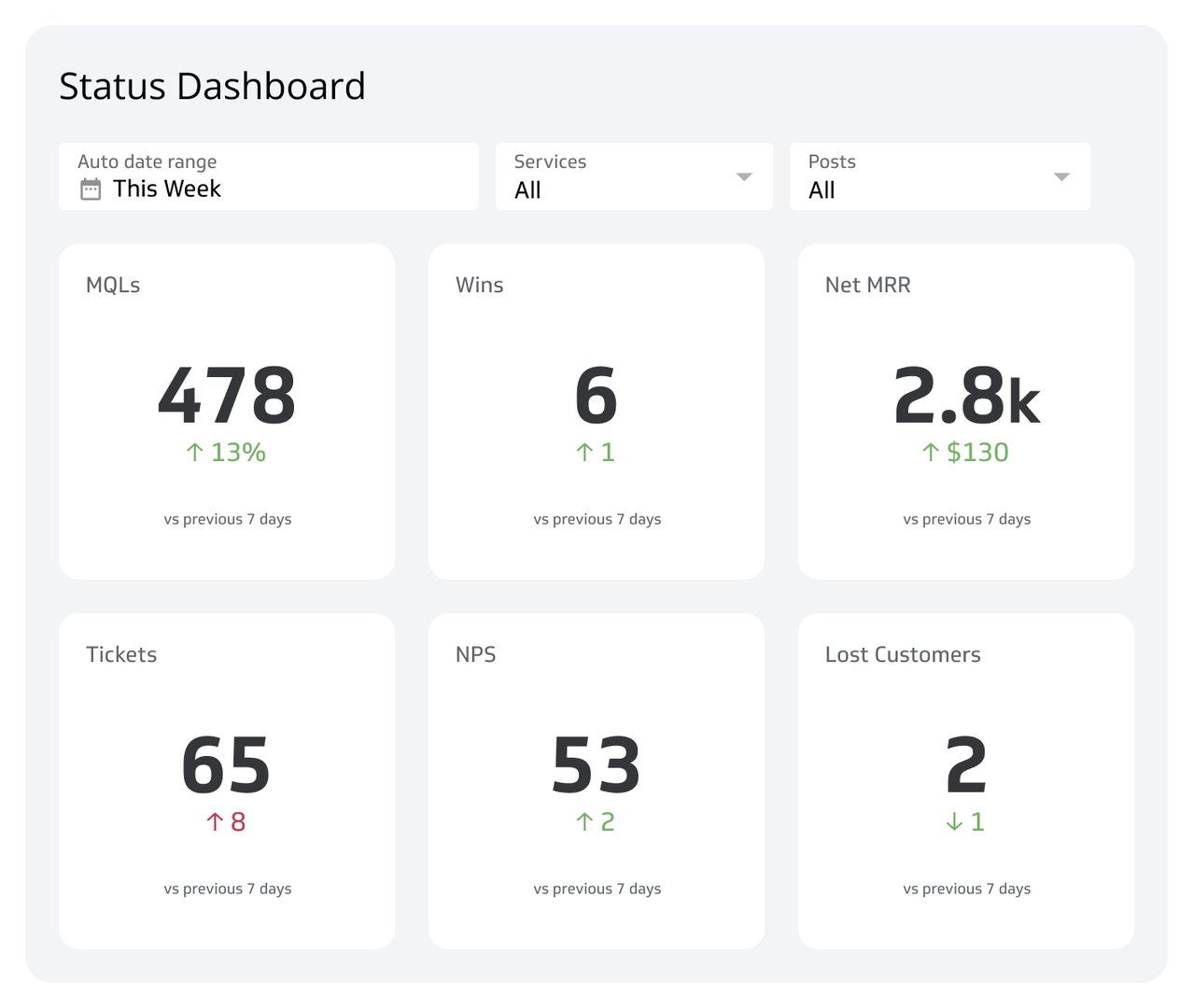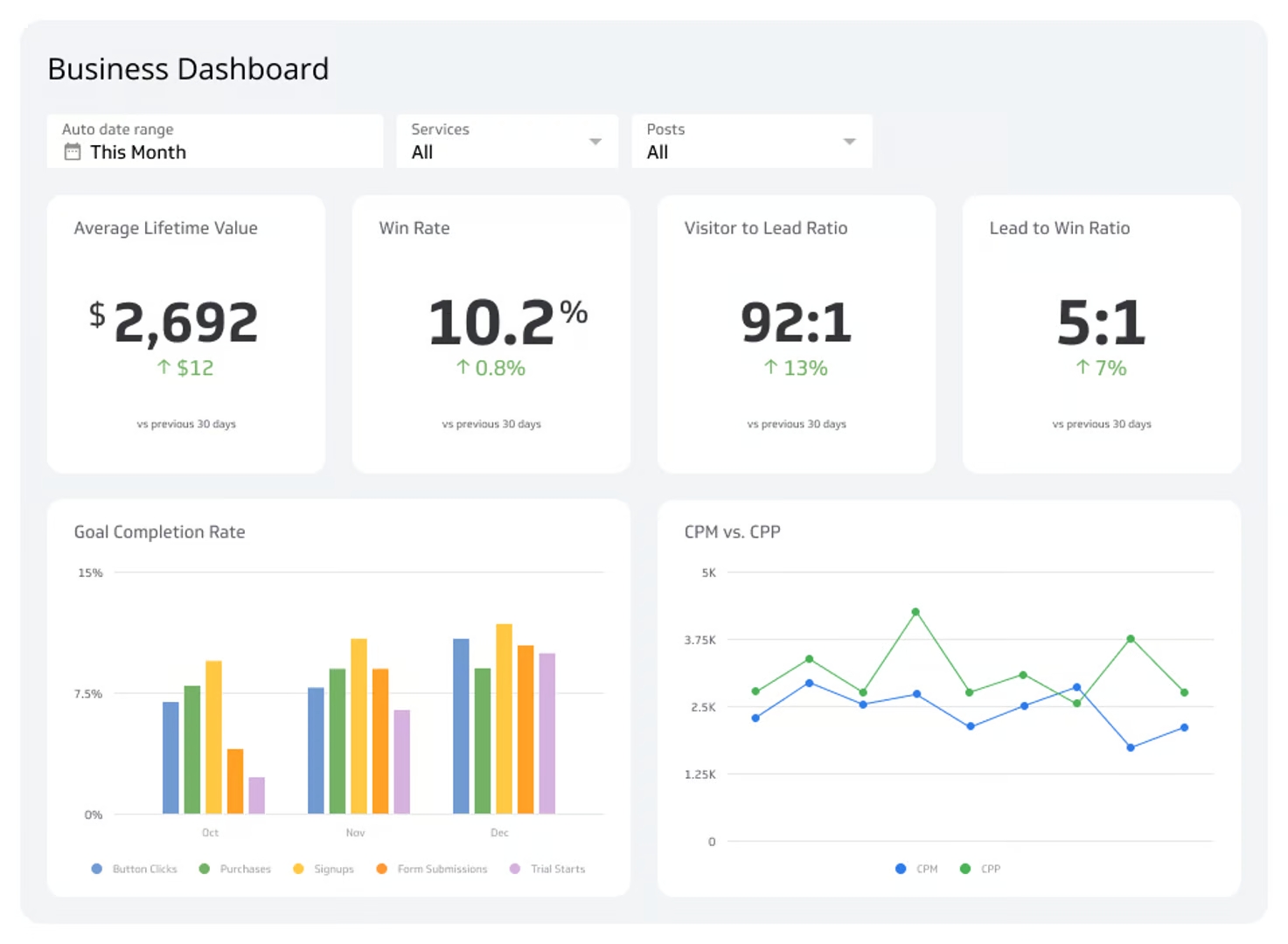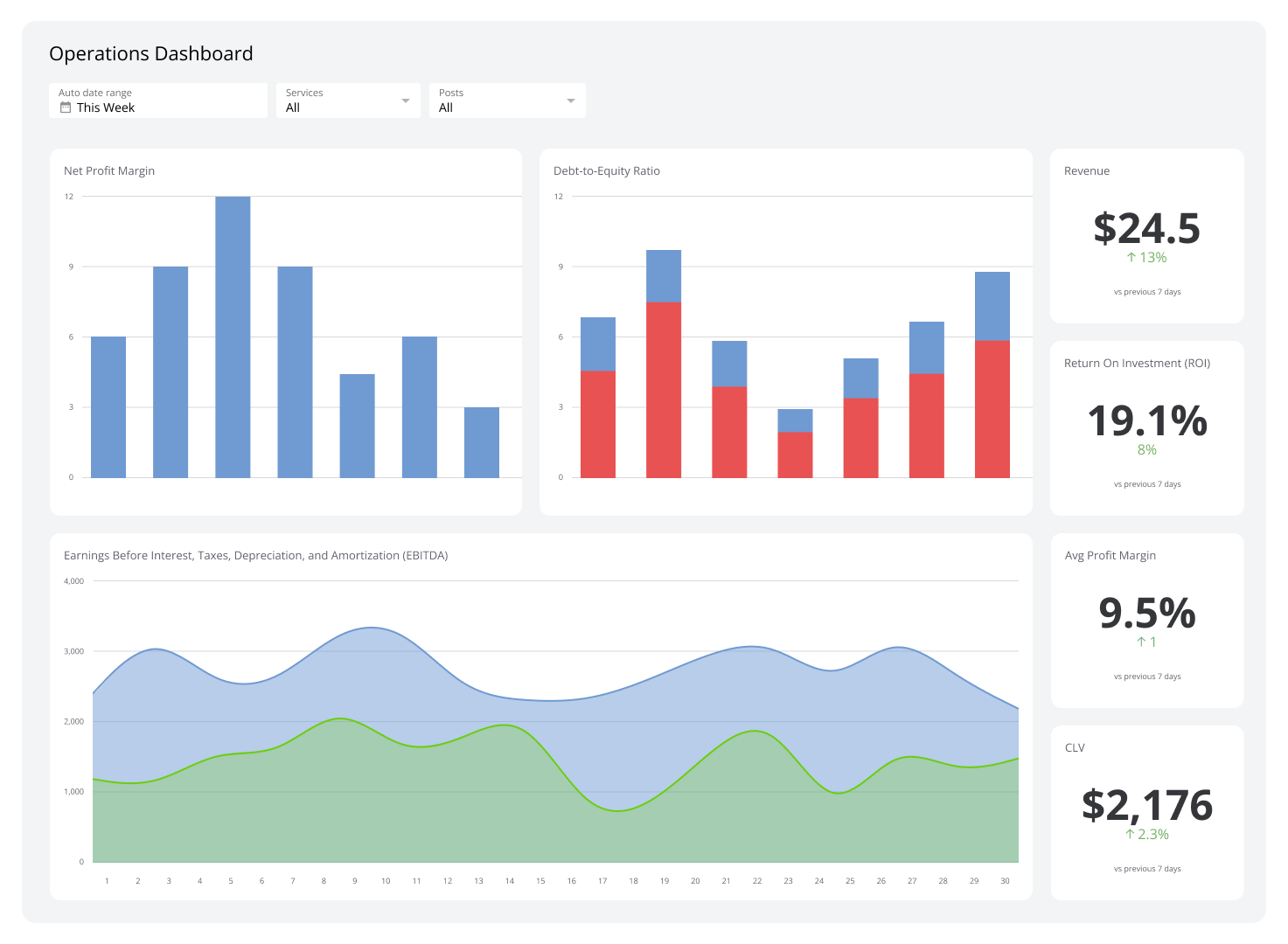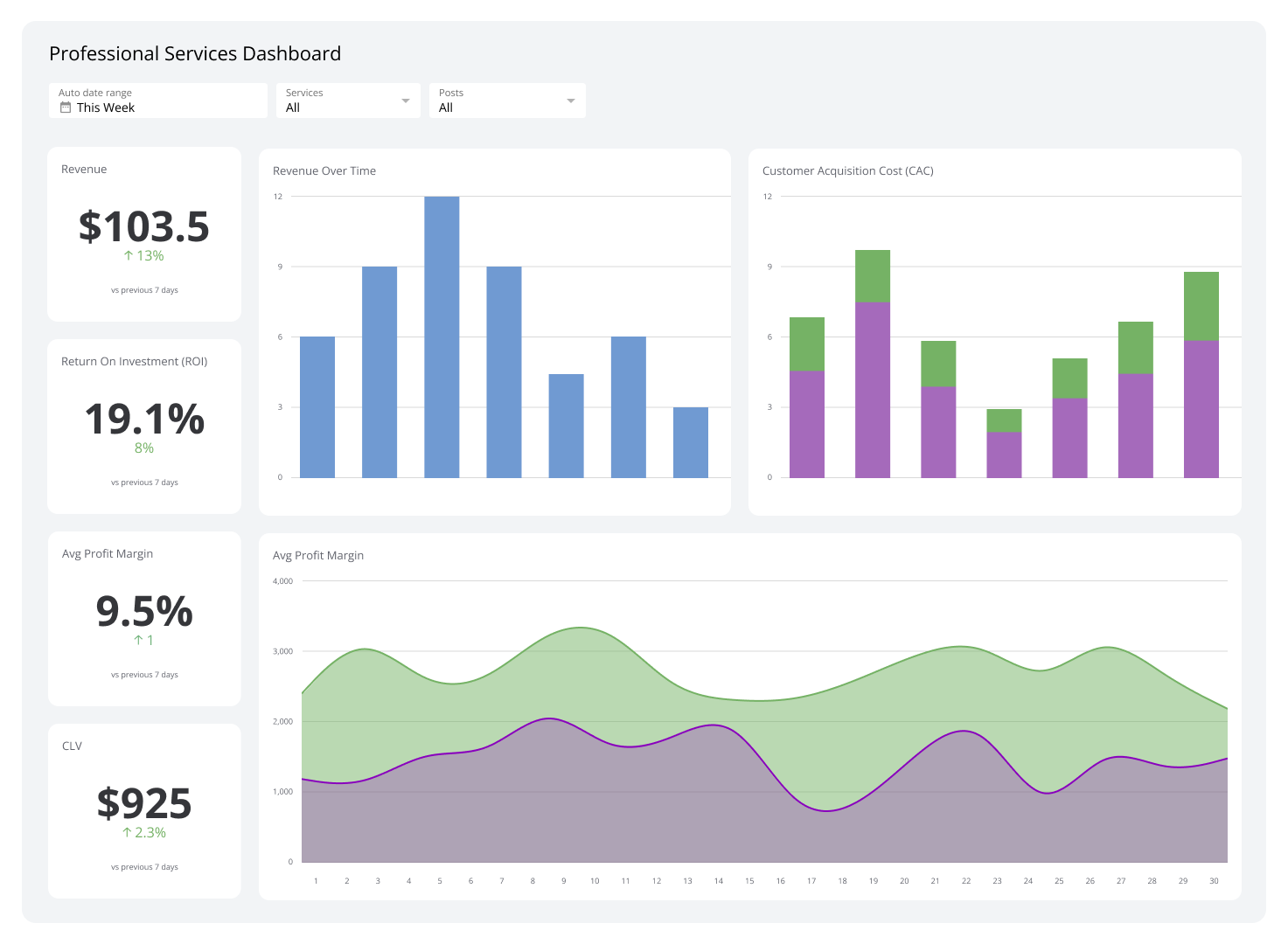Status Dashboard
A clear guide to tracking your team's most important metrics in one place.
What is a status dashboard?
Is your team constantly switching between different apps and spreadsheets just to see what’s going on? A status dashboard is a tool designed to fix that. It’s a visual display that provides real-time updates on your most important key performance indicators (KPIs) and other vital data, all in one place.
Crafted for simplicity and clarity, a status dashboard allows stakeholders to quickly understand the current situation and make informed decisions without getting lost in the details. From IT operations to marketing campaigns, status dashboards are used across all types of businesses to improve efficiency and team alignment.
Key components of a status dashboard
A great status dashboard is more than just a collection of charts; it’s a carefully designed combination of data, visuals, and technology. Here are its primary components:
- Key Performance Indicators (KPIs): These are the quantifiable measures you use to track progress toward your goals. A status dashboard displays these KPIs in an easily digestible format, like gauges or simple number callouts.
- Real-time data: Status dashboards are defined by their ability to provide current information. They connect directly to your data sources and update automatically, giving you the most recent snapshot of your operations.
- Visual elements: Charts, graphs, and tables are used to make complex data understandable and engaging at a glance. The goal is to tell a story with your data, not just present numbers.
- User-friendly interface: The design of a status dashboard is focused on usability, enabling team members of all technical levels to navigate and interpret the information easily.
Why are status dashboards important?
In a world filled with data, status dashboards have become essential tools for high-performing teams. They offer several clear benefits:
- Make faster, smarter decisions: By converting raw data into actionable insights, status dashboards empower your team to make informed and timely decisions.
- Improve efficiency: They provide a consolidated view of multiple data sources, eliminating the manual effort and time spent collecting and combining data in spreadsheets.
- Promote transparency and alignment: By displaying real-time data that’s accessible to everyone, status dashboards foster transparency, build trust, and get the entire team on the same page.
- Track goals effectively: They allow you to continuously monitor progress towards strategic objectives, ensuring you stay on track.
Common applications for status dashboards
The versatility of status dashboards means they can be implemented across many different departments and industries. Here are some of the areas where they have a significant impact:
- IT Operations: In IT, status dashboards are used to monitor network health, server uptime, and system performance, allowing for rapid issue detection and resolution.
- Marketing: Marketing teams use status dashboards to track campaign performance, website traffic, lead generation, and return on marketing investment (ROI), enabling them to optimize their strategies.
- Sales: Sales departments rely on status dashboards to monitor sales figures, track sales opportunities, and analyze the performance of their sales funnel.
- Customer Support: In customer support, these dashboards can track ticket resolution times, customer satisfaction scores (CSAT), and support team performance.
- Project Management: Project managers use status dashboards to track project progress against timelines, manage resources, and keep stakeholders informed.
Ultimately, a status dashboard serves as a single source of truth for your team, illuminating the path toward informed decision-making and strategic growth. It’s a tool of empowerment, enabling businesses to translate the complex language of data into a clear narrative that drives action. To see how you can build a powerful reporting tool for your team, explore Klipfolio Klips.
Relevant KPIs and metrics
Related Dashboards
View all dashboards



